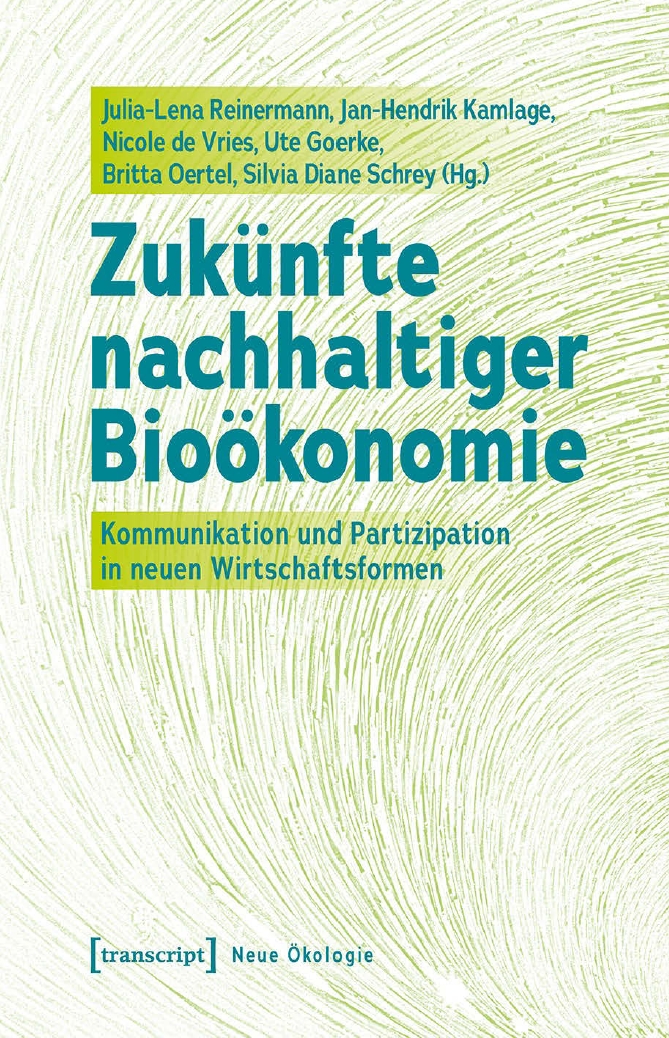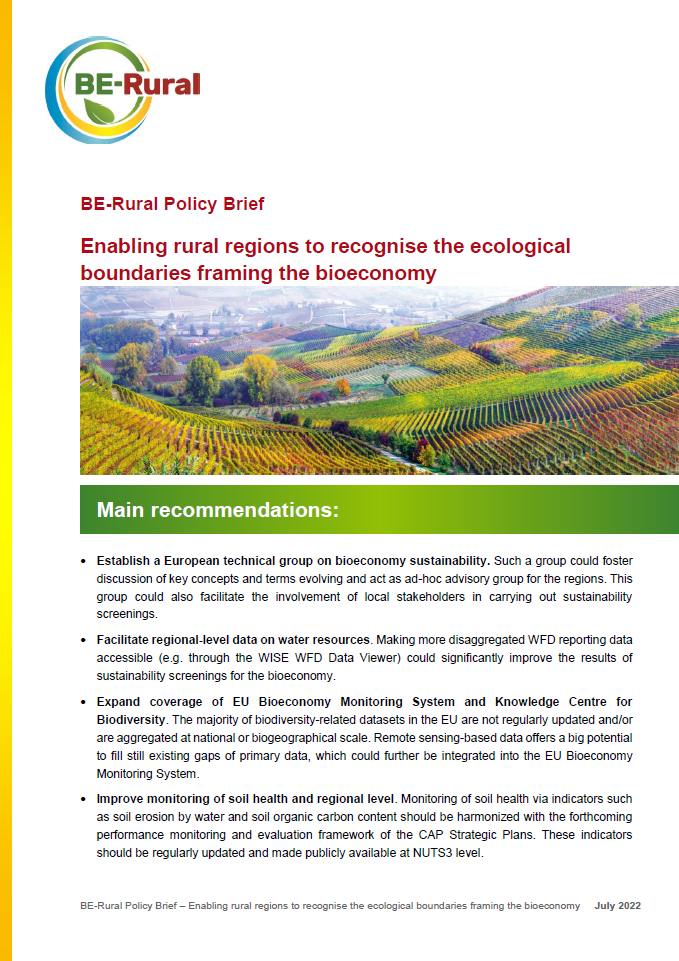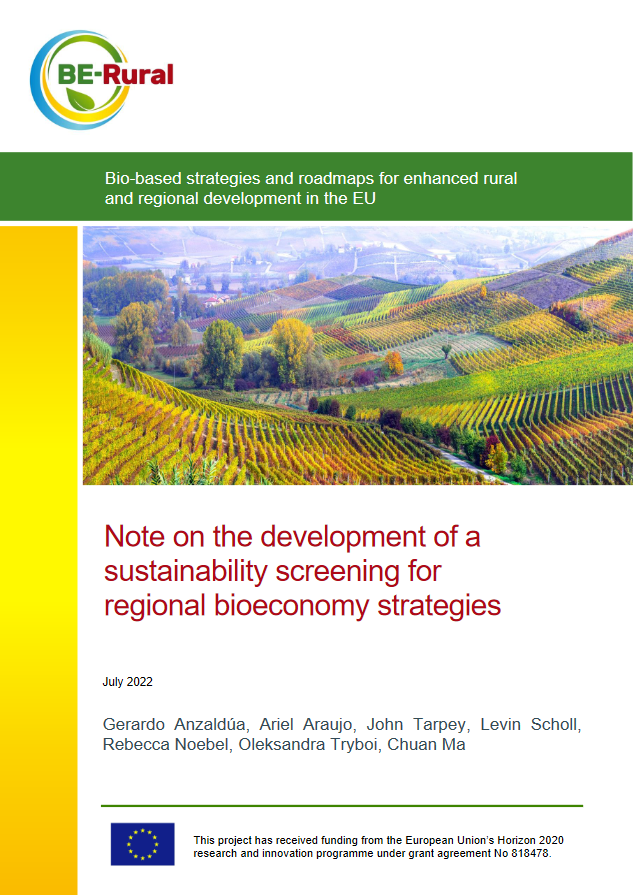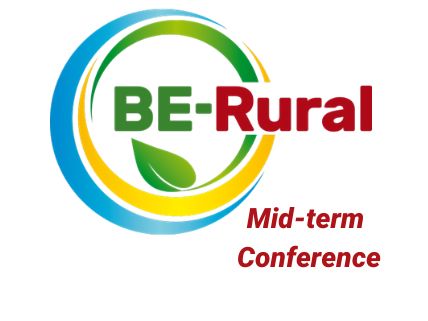The Macro-environment Surrounding BE-Rural's Open Innovation Platforms
Deliverable 2.2 H2020 Research project BE-Rural
- Publication
- Citation
Anzaldúa, G., Abhold, K., Araujo, A., Chebotarev, A., Cosnita, D., Diaconescu, T., Dimov, L., Duic, N., Iorgulescu, R., Kiresiewa, Z., Lazdina, D., Makovskis, K., Markovska, M., Mihajloska, E., Mytlewski, A., Pauna, C., Pavlova, I., Rakowski, M., Schock, M., Szulecka, O., Tröltzsch, J., Zelljadt, E. (2019). D2.2 The macro-environment surrounding BE-Rural’s Open Innovation Platforms. Deliverable of the H2020 BE-Rural project.
With the recent update of its Bioeconomy Strategy, the guidance of its advisory bodies and the engagement of regional groups and representatives, Europe has found a new track towards a sustainable bioeconomy, building on the notion that regions are the most appropriate territorial level at which to implement bioeconomy strategies. The BE-Rural project incorporates this regional focus into its core vision, putting its regional Open Innovation Platforms (OIPs) front and center in the process of studying the potential for regional bioeconomies, and articulating and implementing strategies to make them a reality.
The richness of natural resources in the Strumica region of North Macedonia and the closeness and connection to European borders and markets make the region an excellent candidate for future economic expansion and the development of a bioeconomy strategy. However, the region’s strong outflow of young people, lack of direct investment and absence of standardised agricultural production pose challenges.
In the Stara Zagora region of Bulgaria, collaboration already exists among some key bioeconomy stakeholders such as educational institutions, research and development units, and local businesses. On the other hand, public awareness of the bioeconomy concept (and environmental concerns in general) is low in Bulgaria. Collaboration among all relevant stakeholders will thus require substantial financial, human, and technical resources.
In the Polish Baltic Lagoon regions, cooperation between the relevant administrative units and interested entrepreneurs, as well as scientific entities, is also already taking place at the local level. Regional connections of various economic and social entities driven by Fishery Local Action Groups established in the regions will be the basis for creating a vision of regional development on the basis of the circular bioeconomy.
With the bioeconomy being on the radar screen of politicians at the national level in Latvia, and a national bioeconomy strategy through 2030 already formulated for the country, conditions are good for regional counterparts to be developed. The Vidzeme and Kurzeme regions’ economic focus on primary resource sectors, primarily agriculture and forestry, renders them well-suited for a bioeconomy strategy that builds ties among businesses and other relevant institutions in the agriculture and forestry value chain.
Lastly, the abundance of bioresources in the Covasna region of Romania, combined with the variety of specialized clusters that have been previously established in the region and are driving innovation on renewable energy and environmental technologies, agro-foods, forestry products, and textiles, reveal promising conditions for the formulation and rollout of an integrated bioeconomy strategy.
In providing an outline of the macro-environment at each of the OIP regions, this task has also served to shed light on key points of collaboration between them, confirming previous notions of potential synergies and revealing new areas where the regional bioeconomies of BE-Rural could complement each other and contribute to the vision of a sustainable EU-wide bioeconomy.






